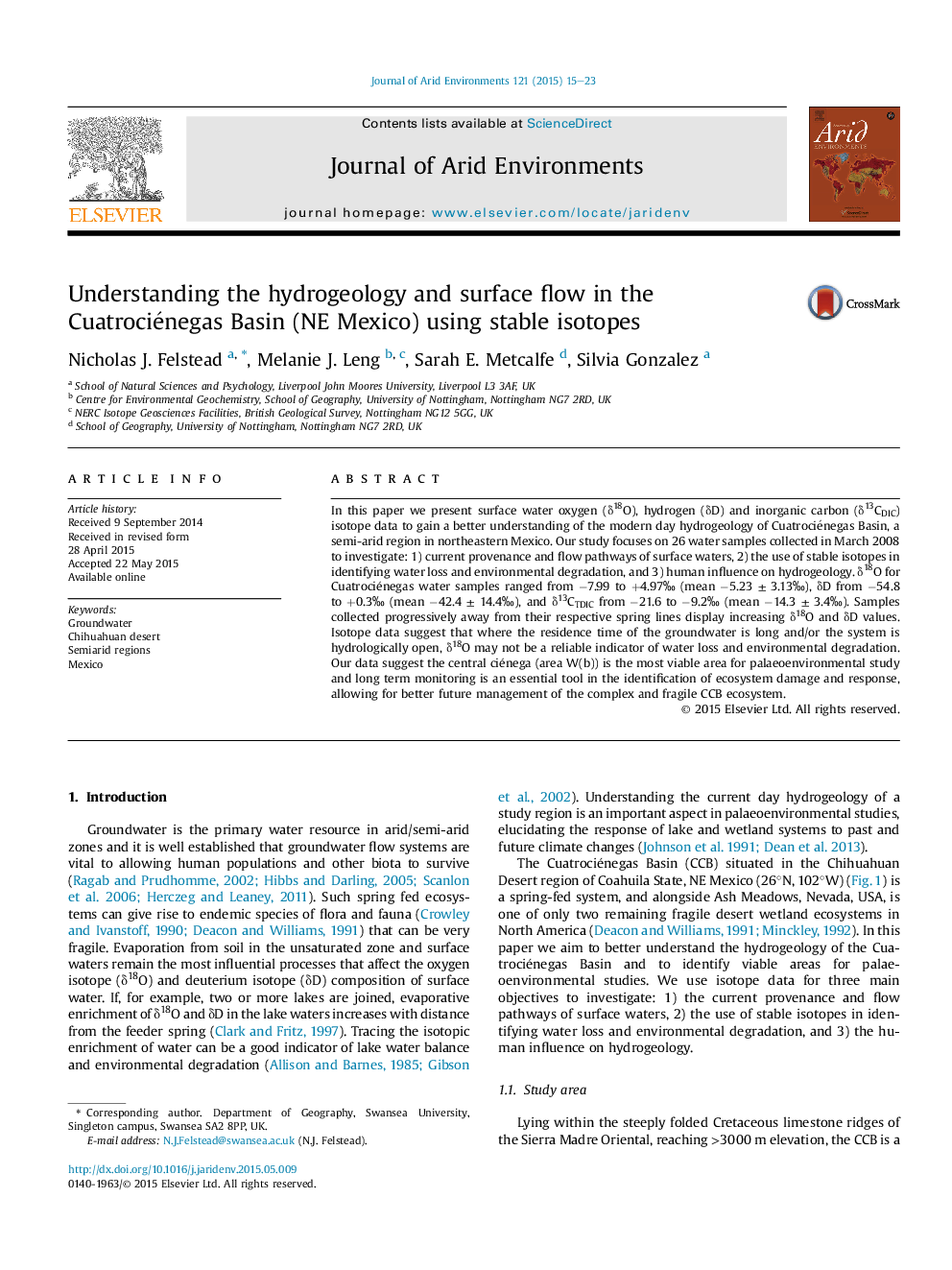| Article ID | Journal | Published Year | Pages | File Type |
|---|---|---|---|---|
| 6303168 | Journal of Arid Environments | 2015 | 9 Pages |
Abstract
In this paper we present surface water oxygen (δ18O), hydrogen (δD) and inorganic carbon (δ13CDIC) isotope data to gain a better understanding of the modern day hydrogeology of Cuatrociénegas Basin, a semi-arid region in northeastern Mexico. Our study focuses on 26 water samples collected in March 2008 to investigate: 1) current provenance and flow pathways of surface waters, 2) the use of stable isotopes in identifying water loss and environmental degradation, and 3) human influence on hydrogeology. δ18O for Cuatrociénegas water samples ranged from â7.99 to +4.97â° (mean â5.23 ± 3.13â°), δD from â54.8 to +0.3â° (mean â42.4 ± 14.4â°), and δ13CTDIC from â21.6 to â9.2â° (mean â14.3 ± 3.4â°). Samples collected progressively away from their respective spring lines display increasing δ18O and δD values. Isotope data suggest that where the residence time of the groundwater is long and/or the system is hydrologically open, δ18O may not be a reliable indicator of water loss and environmental degradation. Our data suggest the central ciénega (area W(b)) is the most viable area for palaeoenvironmental study and long term monitoring is an essential tool in the identification of ecosystem damage and response, allowing for better future management of the complex and fragile CCB ecosystem.
Related Topics
Physical Sciences and Engineering
Earth and Planetary Sciences
Earth-Surface Processes
Authors
Nicholas J. Felstead, Melanie J. Leng, Sarah E. Metcalfe, Silvia Gonzalez,
